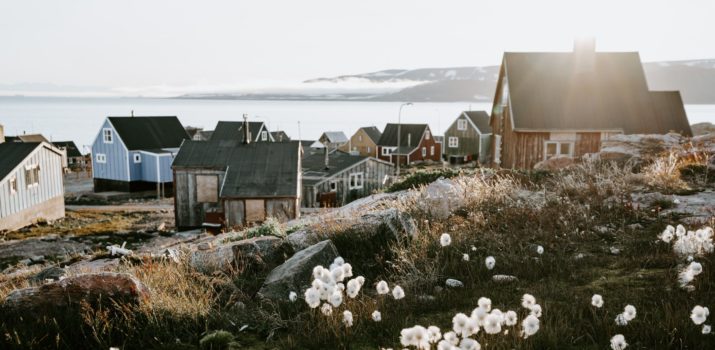Greenland: yesterday and today


Kalaallit Nunaat, a melodious sound that invites you to travel, even if you don’t know what it is at first sight… An island at the end of the world, in Danish Grønland, in French Groenland
Since its discovery by the Vikings in the 10th century, Greenland has never ceased to fascinate. With a surface area of 2,175,600 km2, it is the largest island in the world, yet has the lowest population density (around 0.03 inhabitants per km2). It is almost entirely covered by an ice sheet, an ice cap up to 3,000 meters thick. Colonized by Denmark in the 18th century and under colonial rule until 1953, Greenland today has a status of extended autonomy, although it is still dependent on Denmark for certain aspects.
Although we tend to associate this country with wide-open spaces, peace and escape, it is currently facing a number of challenges. Affected by major social problems, such as corruption, huge discrepancies in salaries and lifestyles, alcoholism, unemployment, one of the highest suicide rates in the world, lack of training, etc., it is also directly threatened by global warming and the melting of the ice caps, which paradoxically also represent a hope of access to hitherto inaccessible resources. They would provide an income for a population that has undergone a demographic explosion and for whom employment opportunities are very limited. But as these resources are also coveted by certain major powers, the country faces an additional threat.
As an introduction to the exhibition Qanga: Greenland through time, which will be on show at the Palais de Rumine from May 13, 2022 to January 29, 2023, we present a selection of documents on Greenland. You’ll discover works on its history and colonization, explorers’ accounts, photographic works, comic strips, fairy tales and novels by Greenlandic authors or foreigners fascinated by this island at the end of the world.
Discover our selection of documents on the theme of Greenland, from April 25 to May 28, 2022 at BCUL – site Riponne.
As part of the exhibition Qanga: Greenland through time, from May 13, 2022 to January 29, 2023, organized by the Palais de Rumine science and history museums.
Source : Marc AUCHET, Jean Maurice BIZIÈRE, Jean CORBEL, “GROENLAND”, Encyclopædia Universalis [online], accessed April 7, 2022. URL : http://www.universalis-edu.com/encyclopedie/groenland
Photo by Annie Spratt on Unsplash